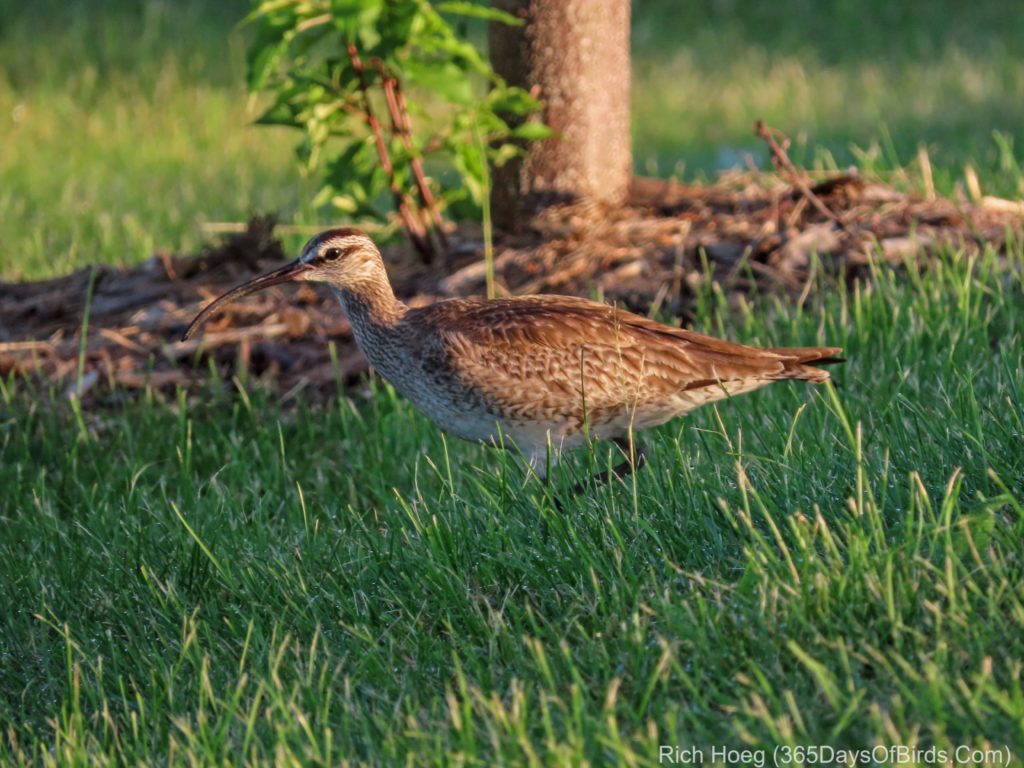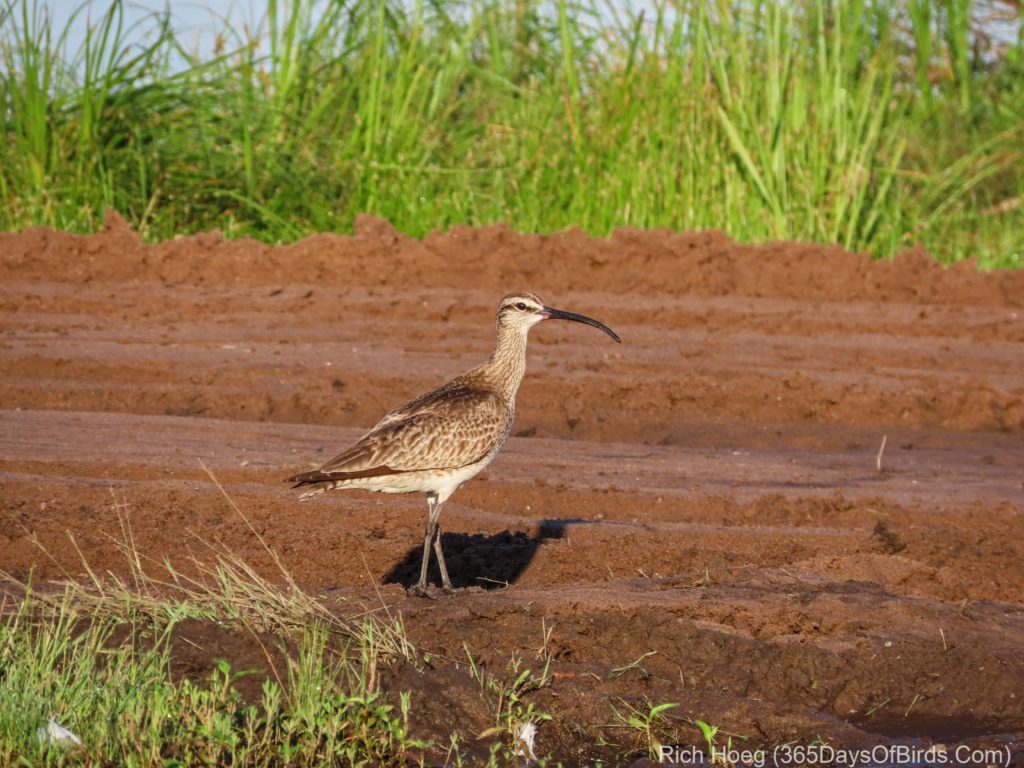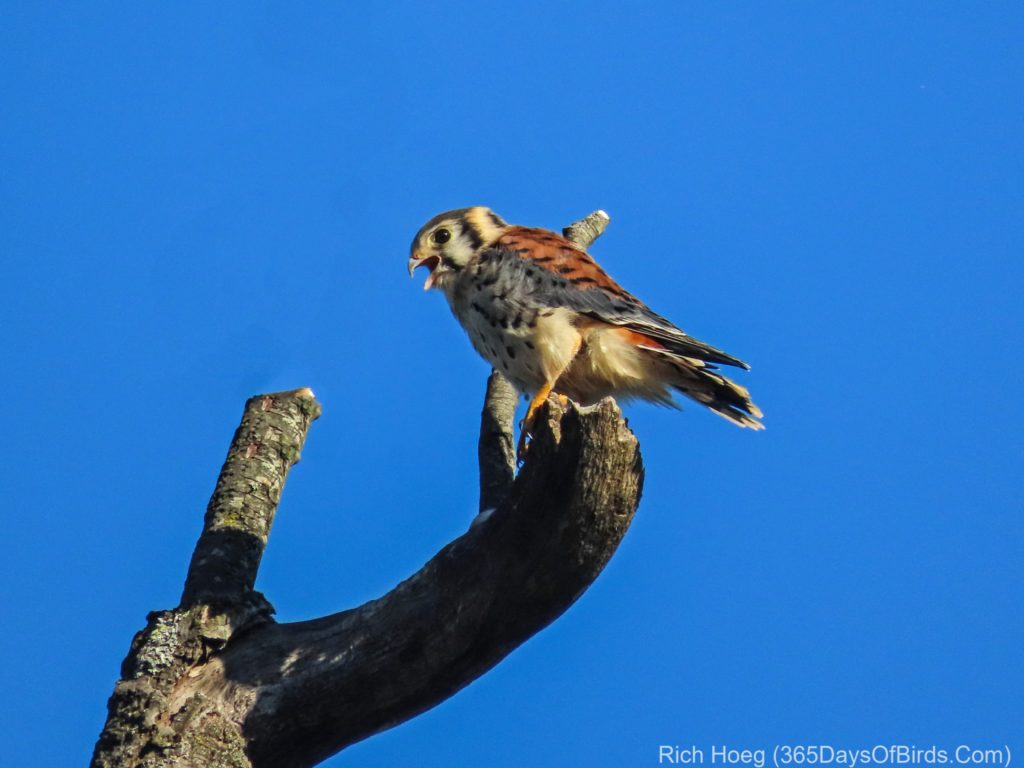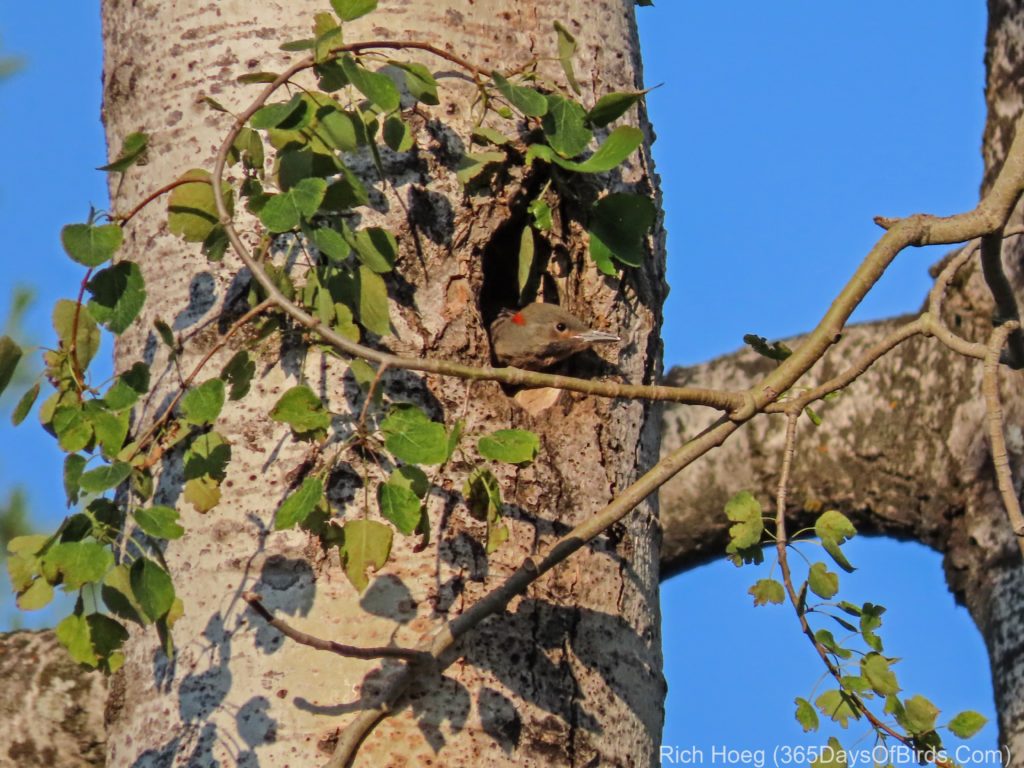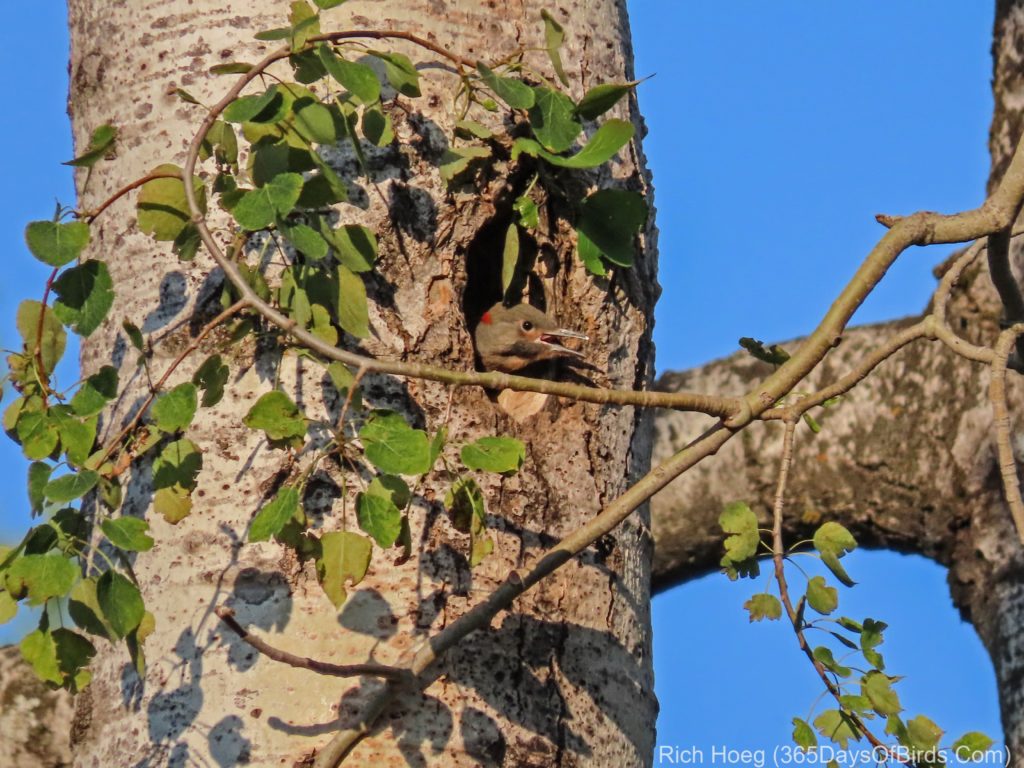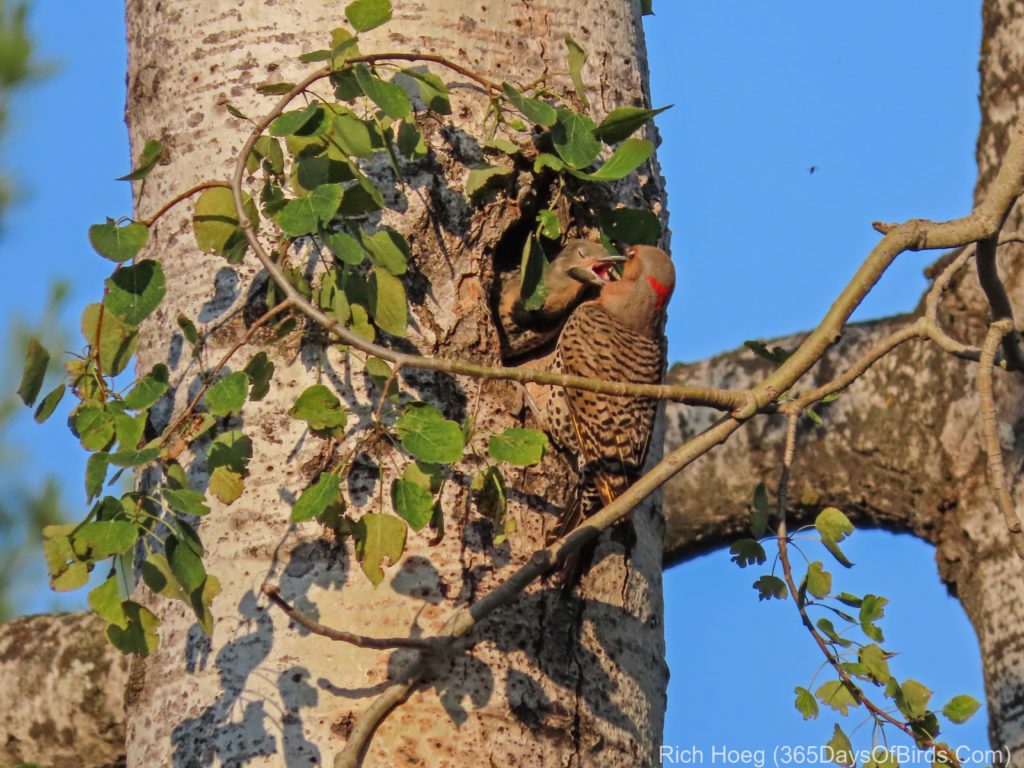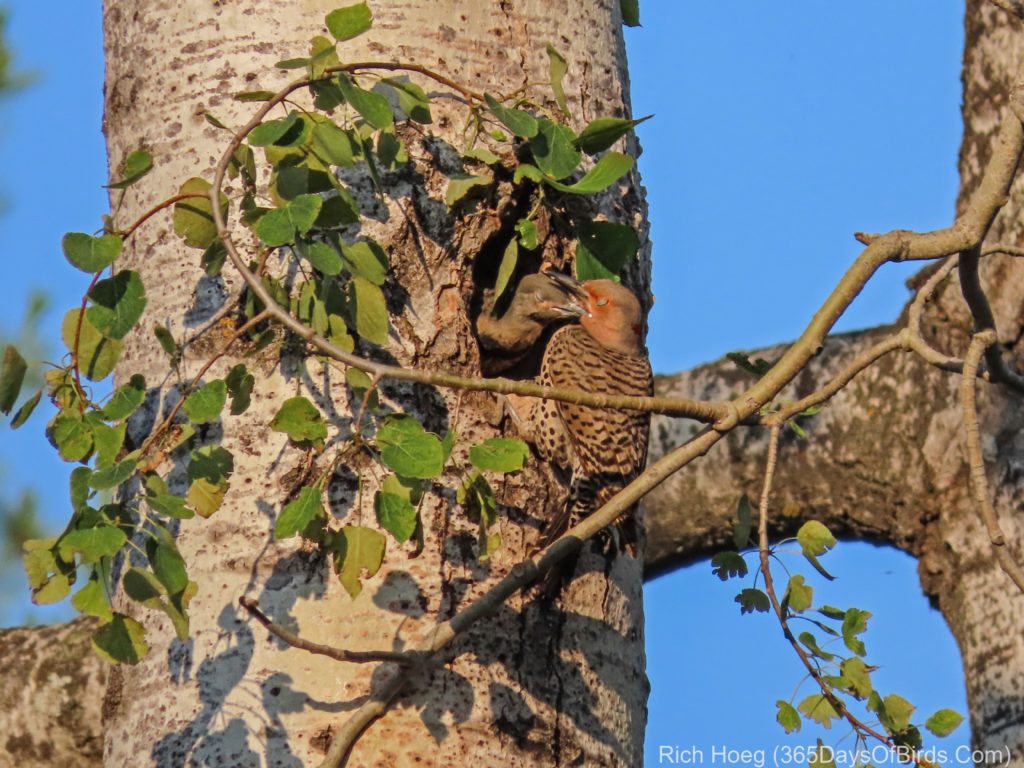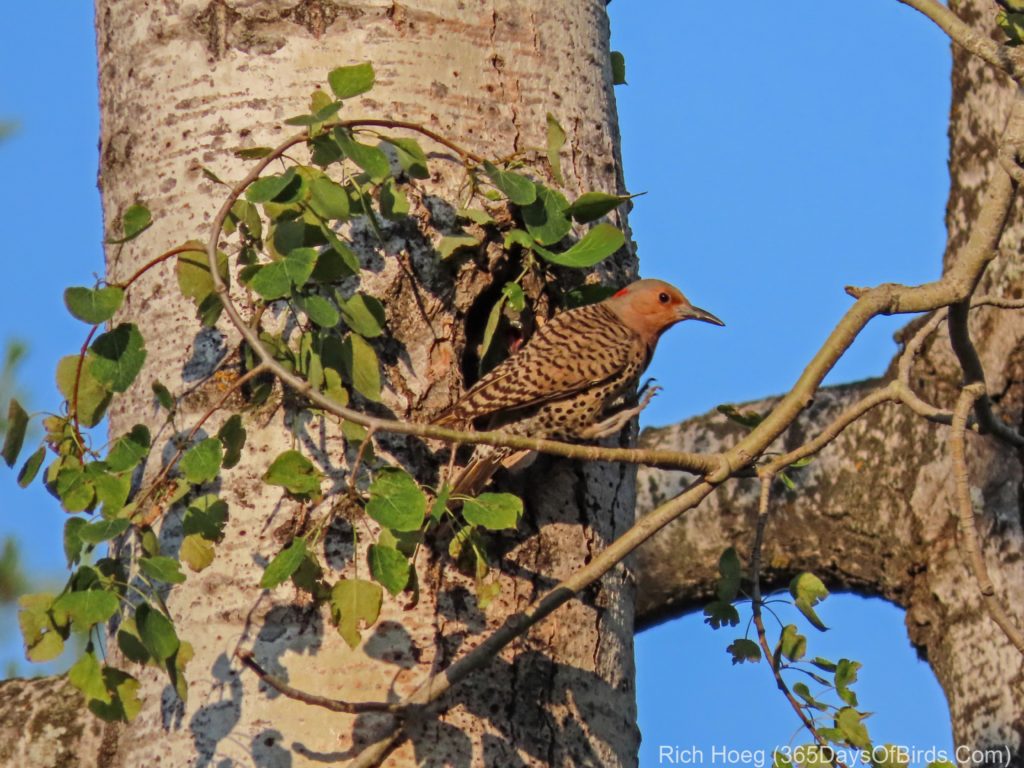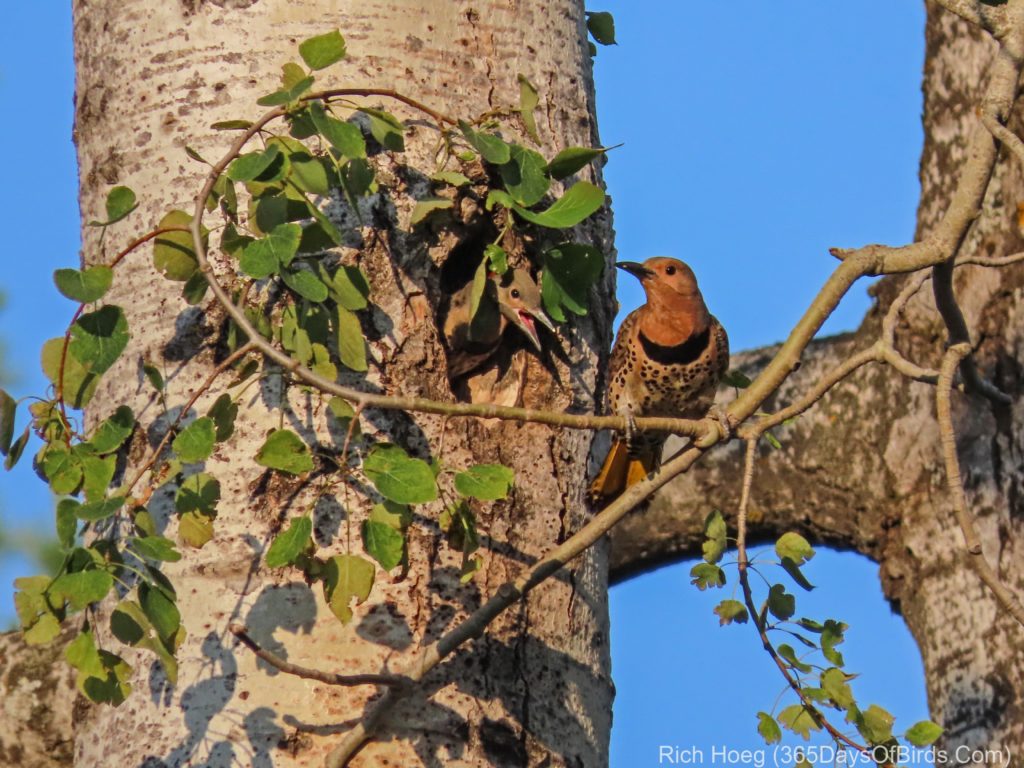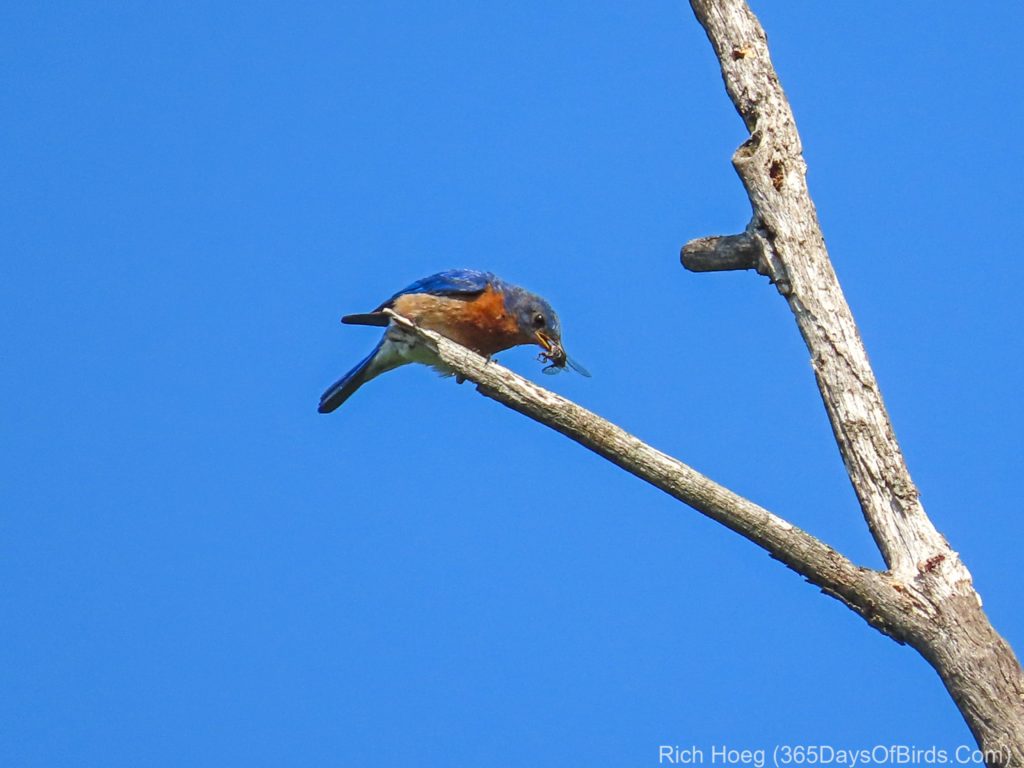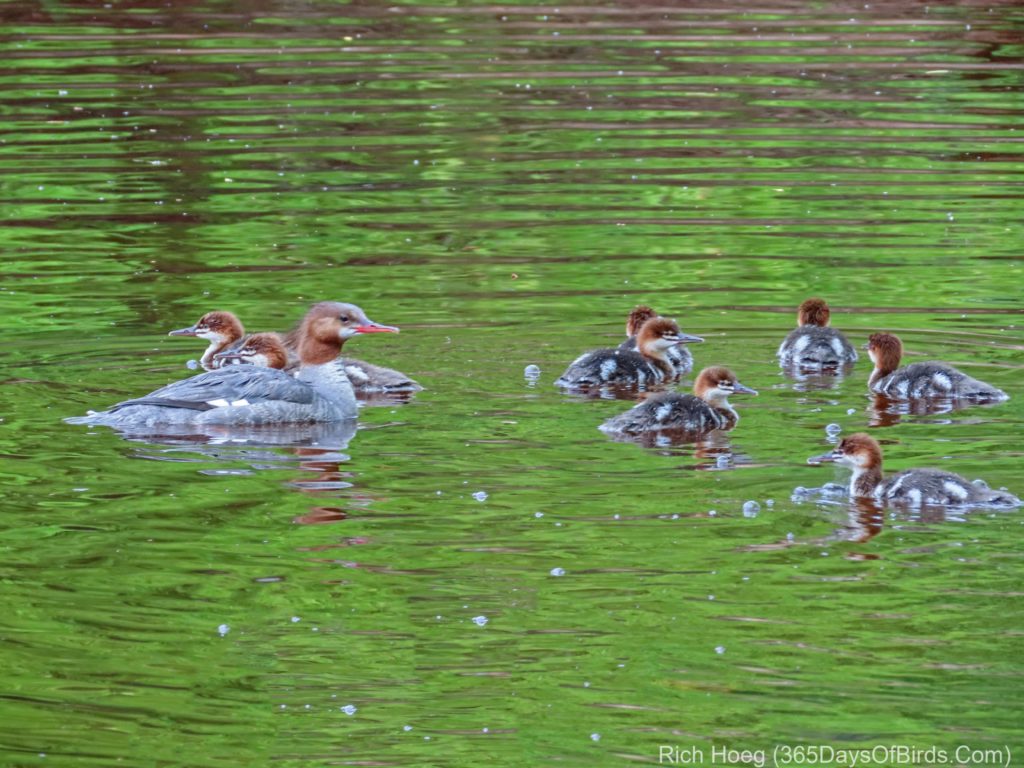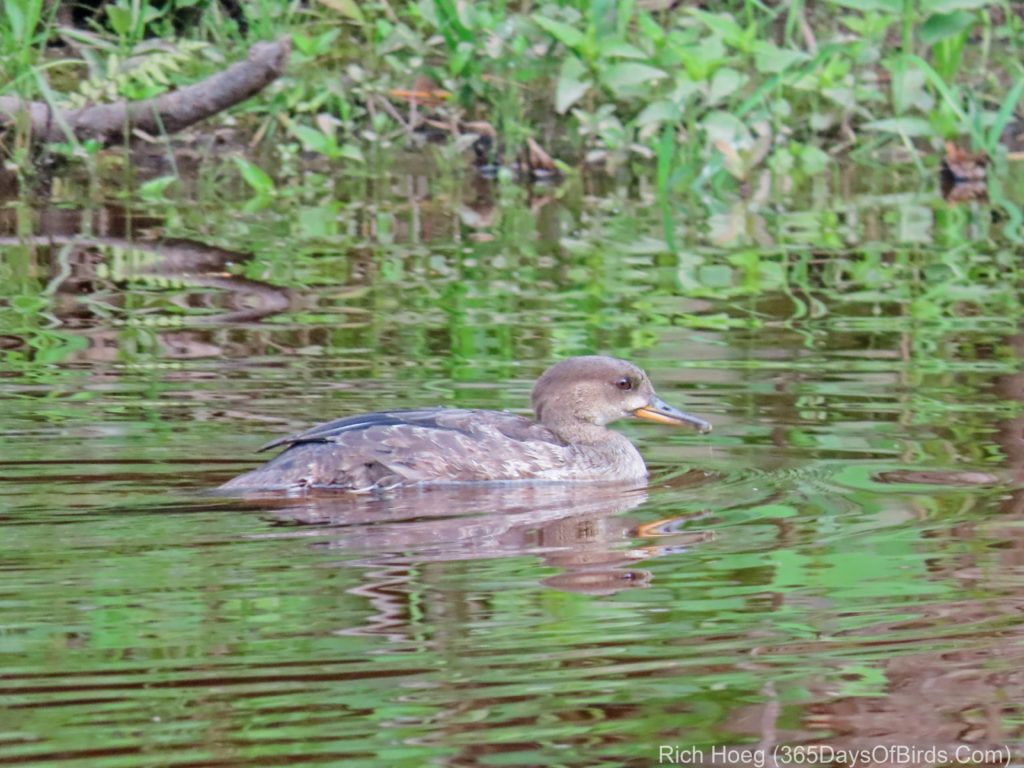I have often espoused about the importance of catching first light for photography. I hope this post will demonstrate the importance of that fact. My target bird for this morning was an unusual migrant already heading south (yes … the southern migration has now started). A Whimbrel which breeds on the shores of Hudson Bay and the Arctic has been calling Minnesota Point its temporary home for the last week. The tall grasses at the end of Park Point are providing a tundra like / meadow environment which this bird likes.
I left my home at sunrise (now 5:30 am) and arrived at the Park Point fields a few minutes after 6:00 am. The golden orb was only just beginning to peek over the pine trees that populate Lake Superior’s dune barrier. I took my first photos when the Whimbrel was in the full shade. Although this meant many, many blurry images, knowing that my target bird would pause every so often during its search for breakfast … I pressed the shutter and waited … one out of every series of images would normally be in focus and of a stationary bird.
Pay attention to how my photographic opportunities varied from the first rays of sun, to almost 30 minutes later when full sun was now the equation. I like the soft light of the earlier pictures, and left my Whimbrel when in my opinion the sun was getting to high in the sky (6:45 am)! Notice how the plumage color changes as I acquire more light for photography.
One final comment as we now start to head into the southern migration here in the extreme northern reaches of the United States. Unlike the northward migration in the spring, during the southern migration birds will “hang around” if they find good food sources. This gives a person the opportunity to enjoy birds for a period of time as they will not immediately “push on”.
Whimbrel at 6:08 am (love the heavy dew on the grasses)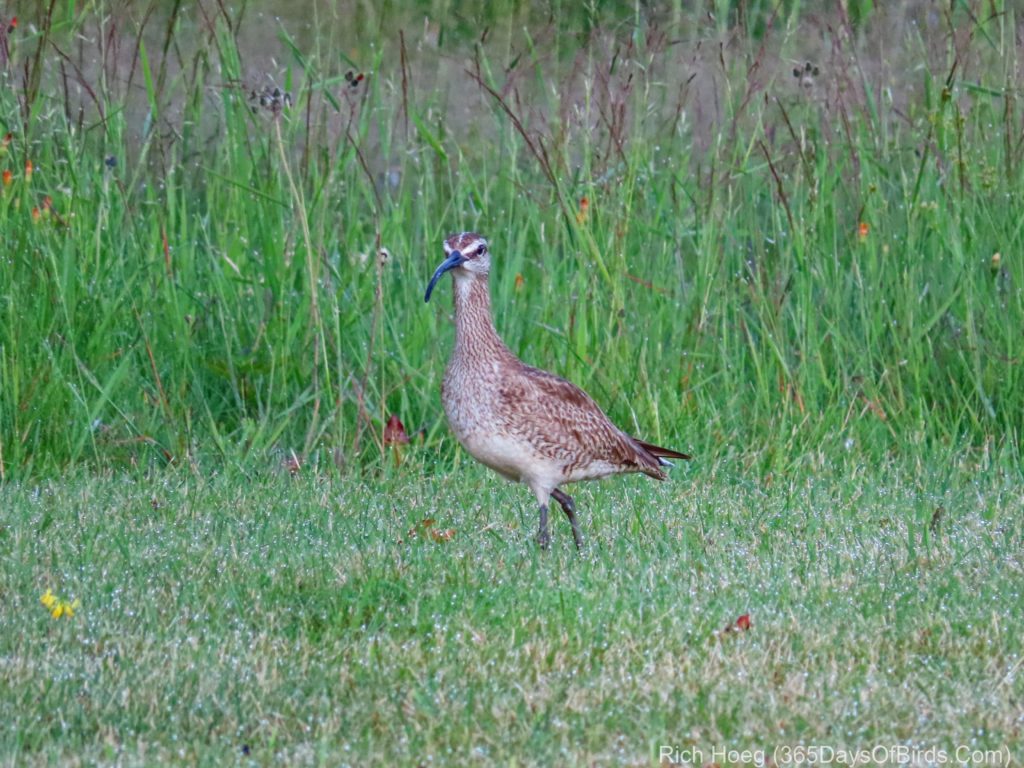
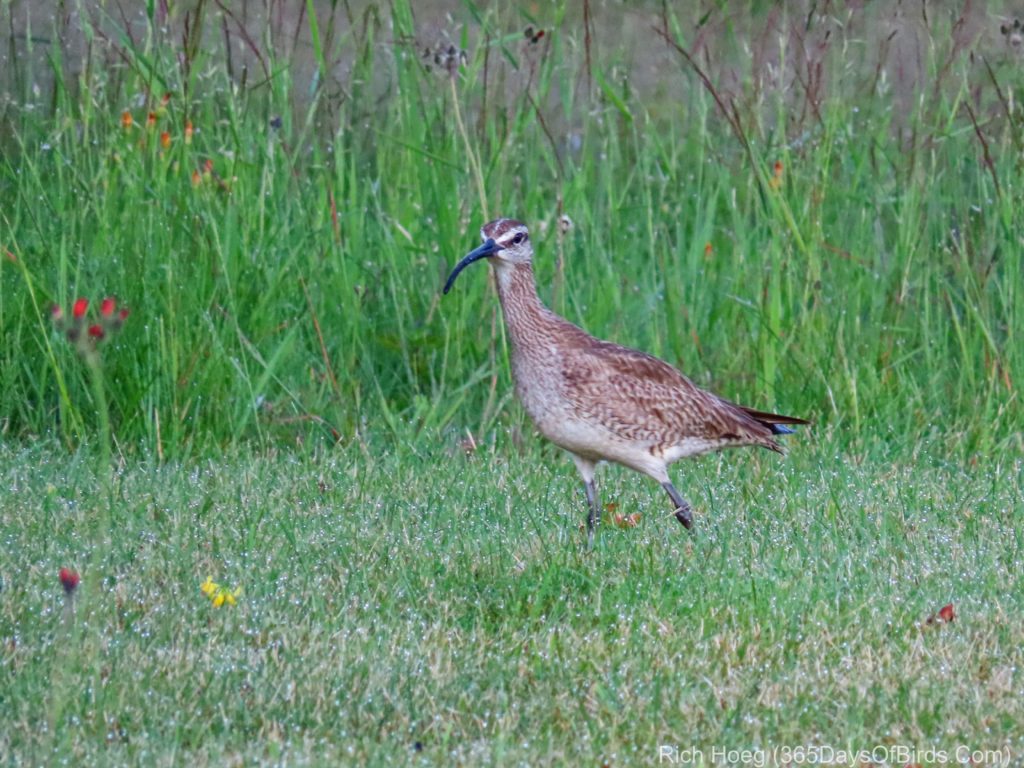
Whimbrel at 6:10 am (now that the sun is up, the dew is hard to see)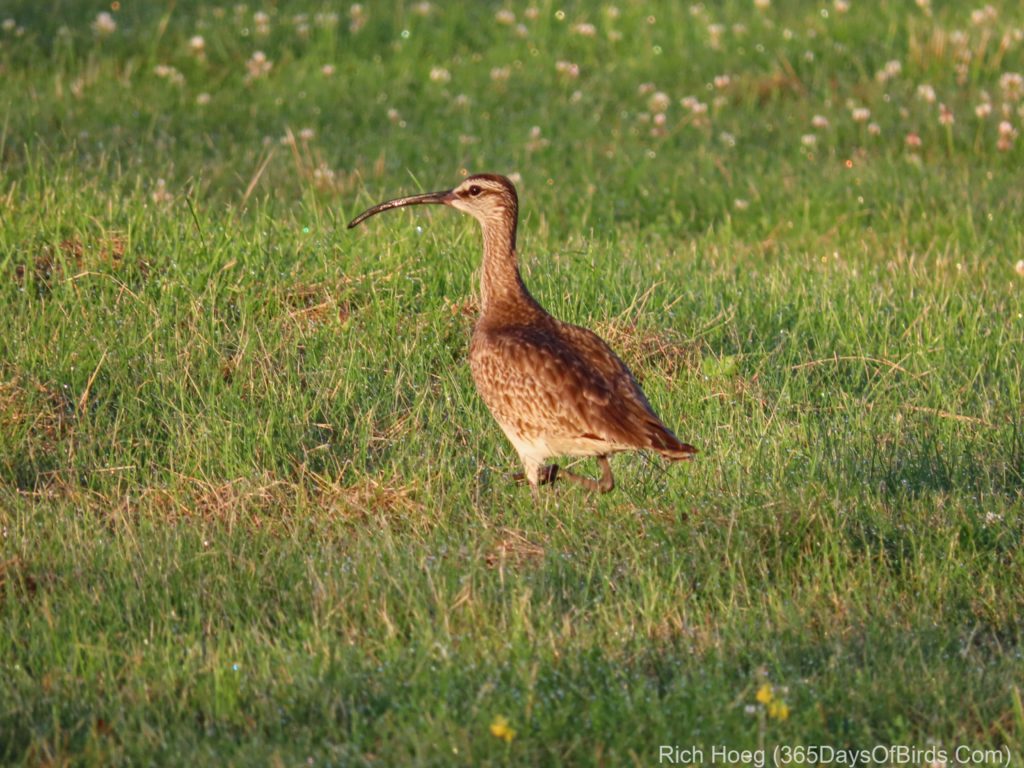
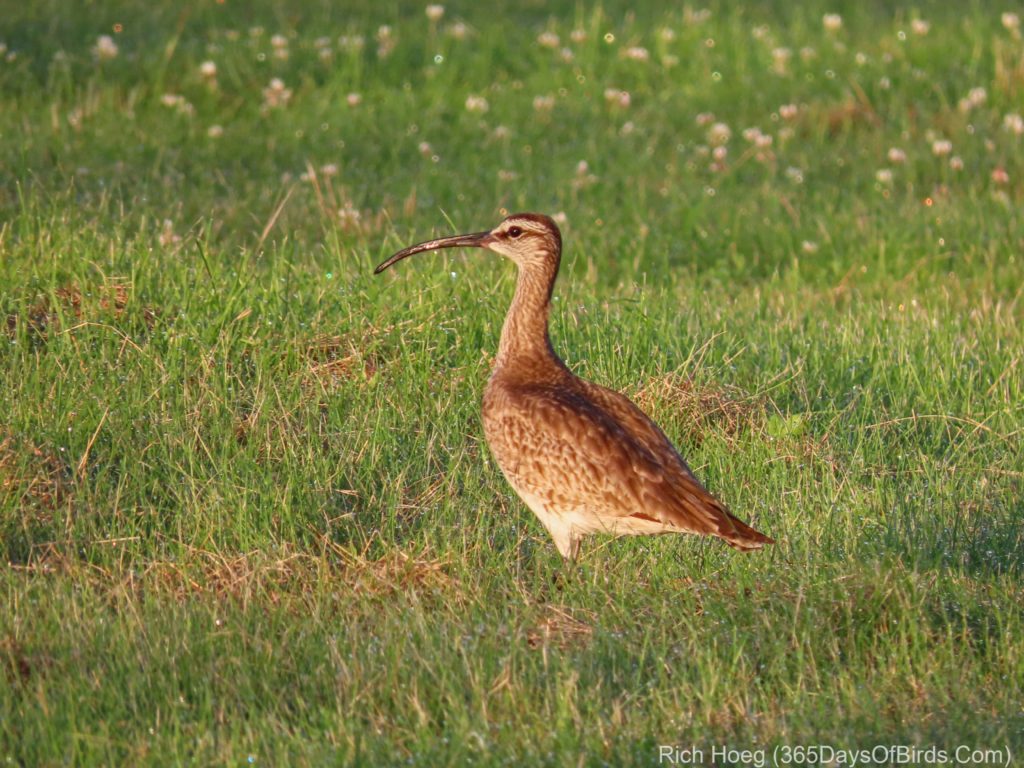
Whimbrel at 6:23 am (early sun means shadows!)